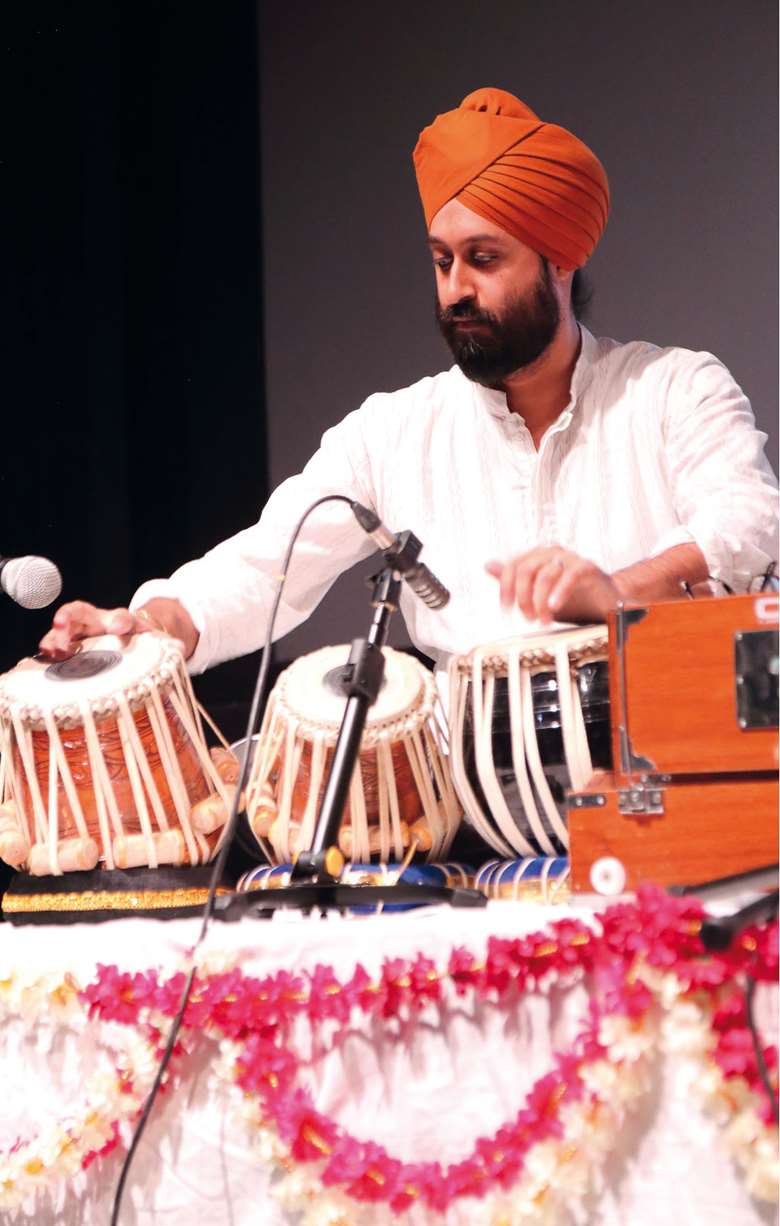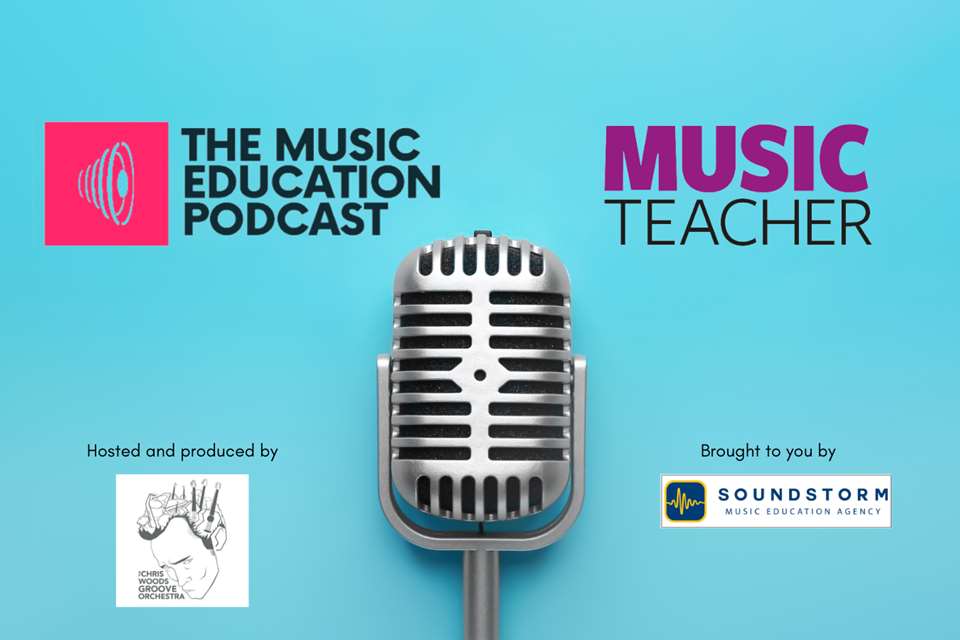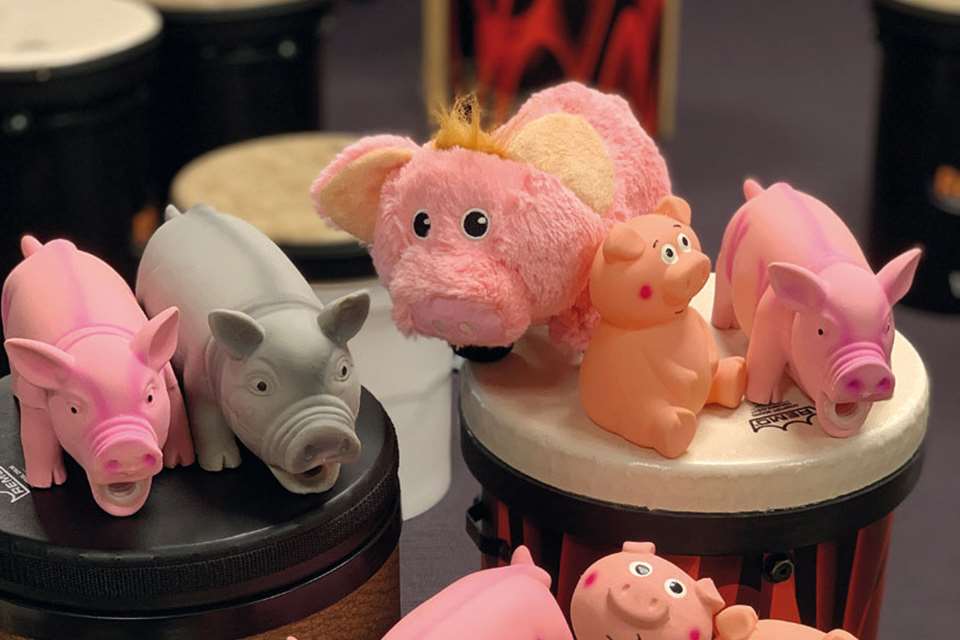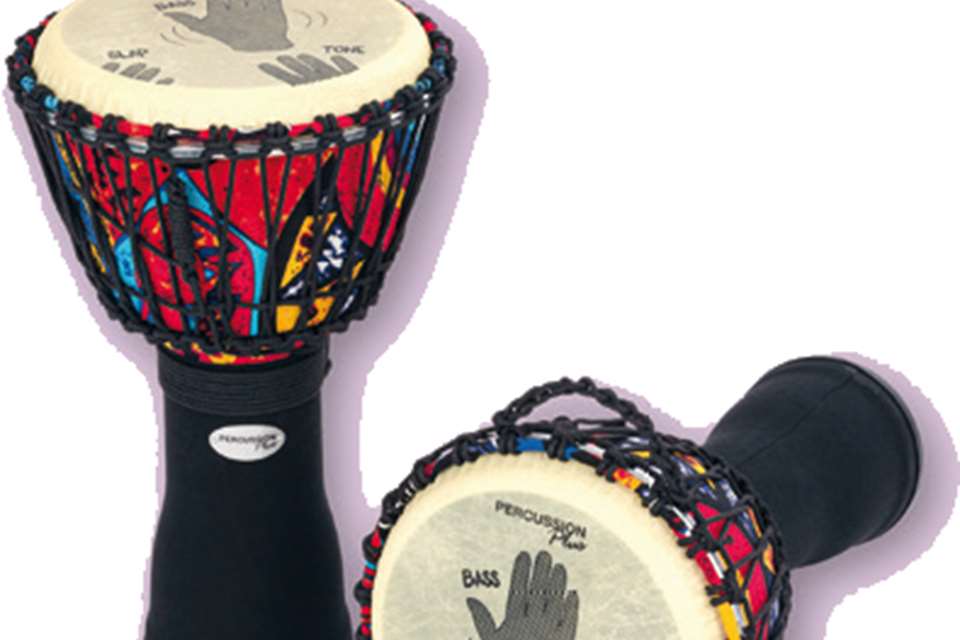Counting culture: Inclusive percussion lessons
Chris Woods
Friday, July 1, 2022
How can we make our percussion lessons more inclusive, facilitating students to develop their own ‘counting culture’? Chris Woods of the Chris Woods Groove Orchestra and host of The Music Education Podcast shares what he's learnt.

It's easy to forget that your sense of rhythm, time, or the ‘internal metronome’ is something you developed over many years. Informed by the experiences you had, the sounds you heard, the way you were taught – the way you were wired.
Many of your accepted fundamental approaches to counting may differ from another person. The idea of a bar or a measure, for example, might not hold such value for someone else. Furthermore, the way we actually approach playing rhythms, or internalise them, can be hugely individual too. This difference isn't only because of geography or genre; it can be simply because our brains are different. It really is such an individual thing.
My experience of working with tabla player Harkiret Singh Bahra was fundamental in allowing me to understand my own ‘counting culture’ and helped me to appreciate that other people don't always access rhythm and time in the same way. The effect on my teaching was profound.
In this article, inspired by my experiences of working with Bahra, I will be sharing ideas for making your percussion lessons more inclusive in the hope of nurturing individuals’ ‘counting culture’ rather than imposing your own. The article has an accompanying podcast where I chat to Bahra and he offers further thoughts, as well as some stunning tabla playing.
An obsession with four
The Western world is in love with the number four. In fact, four crops up across the globe in plentiful supply, but so do a whole host of other numbers, and they should not go ignored. By bringing in different counts to music lessons, you can broaden students’ horizons, and even represent music from a far more global standing. After all, why should the way you learnt to count in music be the way you teach it? Should you ditch that familiar four?
In my chat with Bahra, he tells me that when teaching tabla (a traditional Indian classical instrument), he begins with four and builds from there. He says that his next stop is counting threes within four. So, perhaps there's no need to throw away fours just yet. Maybe four can be a launchpad for other forms of counting to be introduced. Good news for those who, like me, have the number four etched into their very being.

It's worth noting that the rhythm grids are for your guidance only and are not intended to be used with the students
Bahra's fantastically simple but effective exercise is a great introduction to threes and can be achieved as a clapping game or in any instrumental line up. We need one student (or section of the class) counting four, and another section counting three within each beat of four.
Of course, we can go further and move completely away from fours and dabble in counting fives, or perhaps sevens. There are lots of ways to do this, but my favourite is best achieved by thinking outside of the box slightly, again inspired by Bahra.
Free yourself from the bar lines
This article isn't going to be dragged into a debate about teaching notation, but I'm going to say with confidence that in order to reach more students, to cater for more neurodiversities and musical heritages, stepping away from the bar lines and the concept of traditional notation really helps. It will certainly help you to digest the following ideas.
The first idea I want to share with you is how to work with sevens, and the following principal can then apply to all manner of counts. This was again inspired by Bahra and then explored further with my friend Ruben Monteiro, an Afghan Rubab player, for an ‘Attan’ we worked on together. You can listen to it here to get a helpful taste of seven in action.
To many of us, counting or playing a piece of music in seven is slightly terrifying. However, it's a number that again appears across a host of musical cultures and by breaking down the counting, freeing yourself from the bar line, it becomes accessible to all.

To do this, firstly appreciate that ‘one’ should be accented. Simply clap or tap the rhythm, attacking ‘one’ slightly harder. Once students are comfortable, move away from counting and simply ‘feel’ the very distinct phrase.
Once you are happy with that and are ‘feeling’ the phrase and able to forget the count, then you can try sevens ‘version 2.0’. This is a count Bahra taught me several years ago that has become an absolute obsession – it's the beauty of simplicity in action. We simply count as before but then reverse the count.

You can then apply this almost ‘reductive’ way of counting to any kind of count or measure. Five, six, nine, ten. Its a great way to make numbers into a phrase.
We can then take this a step further and borrow from the minimalist composers and even serialist composers and start to build fantastically long phrases. This is great to do with older students and I find is best achieved by approaching things without thought and essentially choose numbers at random. Simply put together strings of numbers and accent the one. For example four, six, three, two, two, two, one, one.

Different perspectives
The Indian Classical Tihai (a polyrhythmic technique) has a similar feel. It requires a particular approach – not feeling the pulse in the same way, but instead feeling a rhythmic phrase. My experience of working with Tihai offered me a different perspective.
Difference in perspective when it comes to the feel of a rhythm is difficult to articulate – it's also objective, which adds another layer of complication. I have observed this difference when working with a number of players, including Bahra, and with students too.
We see these different perspectives crop up within Western popular music (see Hey Ya by Outkast or Blackbird, for example). If you have ever purchased the sheet music for what is a seemingly simple pop or rock song based in four/four, only to find that there is a bar of two/four or three/four, you'll know what I mean. These are often moments when aural based musicians shift their perspective from rhythmic groove to rhythmic phrase, and this is nothing to do with time signatures at all – it's simply a shift to a different perspective.
I spent several years working with Bahra before I realised that he comes from a perspective of playing rhythm as a ‘phrase’ rather than as a ‘groove’. That is my interpretation, at least, and he explains in the podcast episode that this is partly because he learnt rhythms in that way himself. When I was able to see this, our playing together hit a new level; it clicked. If being aware of these perspectives in playing was so important for me to play together with Bahra, then in teaching, it can only lead to positive results.
Often when teaching music, we forget that our own perspective is just that: a perspective. If we can approach playing and teaching with an understanding that others will develop their own ‘counting culture’, we are able to truly participate and connect with all.
Listen to this article's accompanying episode of The Music Education Podcast, hosted by Chris Woods and brought to you by SoundStorm:
Music Teacher is media partner of The Music Education Podcast.





